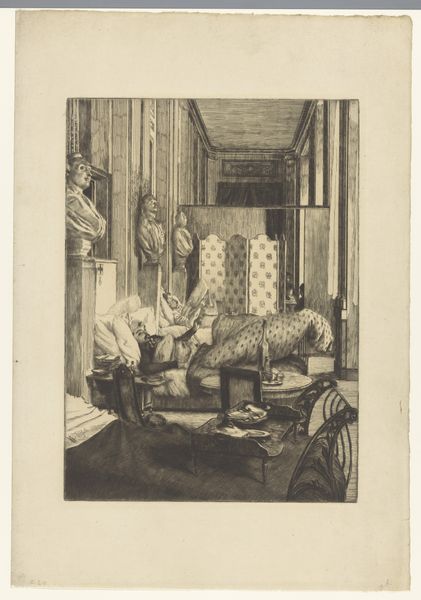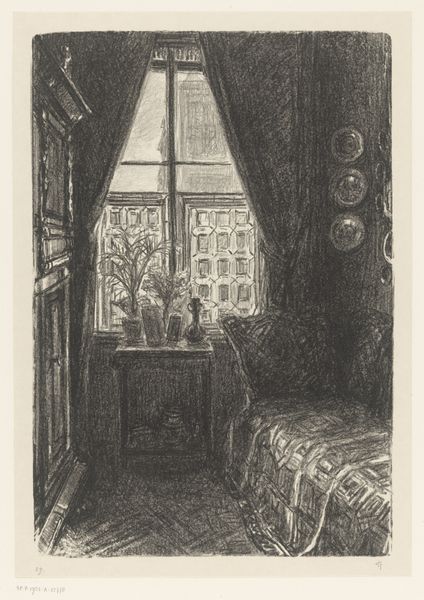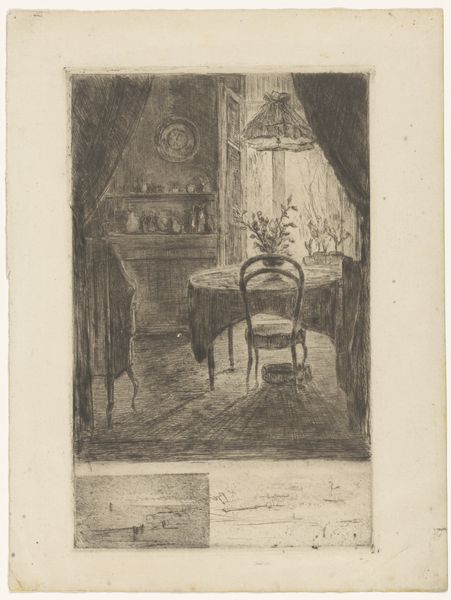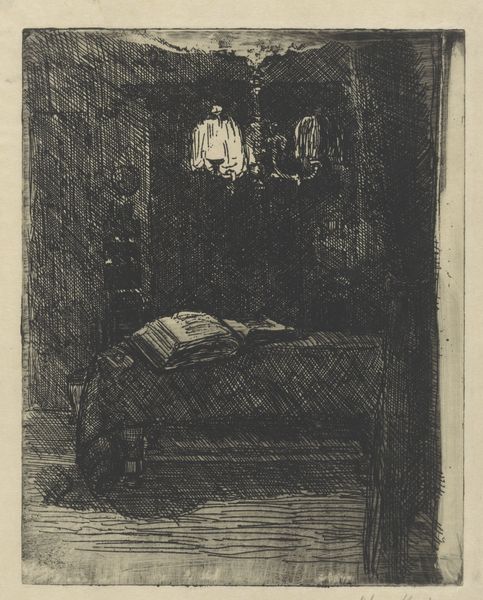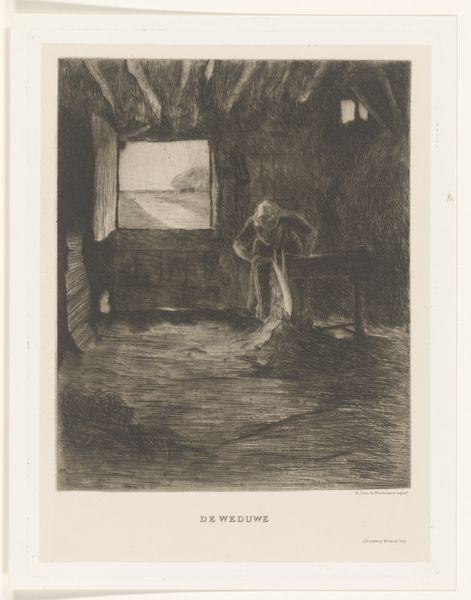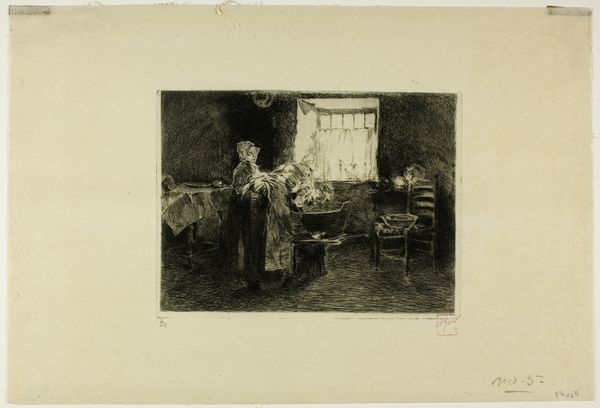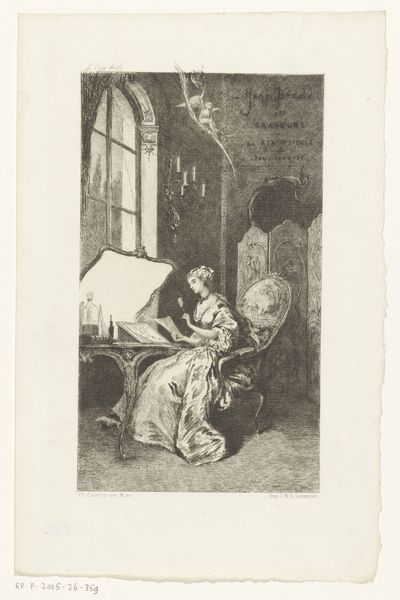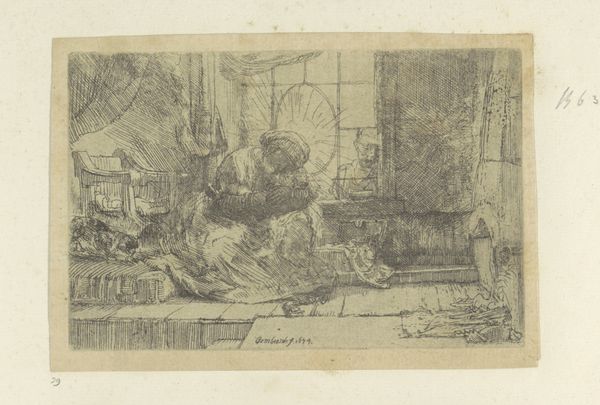
print, etching
#
dutch-golden-age
# print
#
etching
#
old engraving style
#
genre-painting
Dimensions: height 242 mm, width 165 mm
Copyright: Rijks Museum: Open Domain
Curator: Willem Adrianus Grondhout's etching, "Hoek van een atelier," or "Corner of a Studio," created sometime between 1888 and 1934, offers a glimpse into the private space of an artist. It's currently held here at the Rijksmuseum. Editor: It's remarkably intimate, almost melancholic. The textures are quite striking, especially how the light filters through the window and drapes across what seems to be a draped table or desk. Curator: Indeed. The print medium itself lends a certain moodiness, a softness despite the sharp lines used. Consider the broader artistic milieu; during this period genre paintings were highly regarded, showcasing the daily life of individuals. And the domestic sphere was thought to be essentially feminine. Editor: The artist seems particularly fixated on visual metaphor here. The shelf lined with decorative objects almost echoes classical vanitas still life, only updated for a modern age. Skulls and vessels reminding us of temporality... It creates a subtle visual drama, playing against the seemingly banal everyday. Curator: It’s more than a simple depiction; this artist is grappling with their own identity, I think. They may be alluding to tradition by showcasing this setting and these props, yet actively challenging conventional artistic notions through expressive execution and subject matter. Art academies still reigned supreme, but artists were questioning and experimenting. Editor: Agreed, though I read into these elements a quiet rumination of sorts on art itself. That draped table acts like a stage with props. Notice that the opened book at the center shows an image to the viewer, the meaning, still unclear. The interior becomes a microcosm representing a larger art world and its history, or perhaps its burdens... Curator: It's hard to not let one's own historical perspective to influence our read! For modern audiences, the lack of overt "meaning" can be quite disorienting. But to its original audience, it represented a particular shift. A cultural marker within an evolving landscape. Editor: True. Perhaps it also illustrates that any era reveals meaning through layers and its complex relation with those symbolic relics left behind. It also challenges any attempt to extract one meaning. Ultimately the personal iconography might mean the most, the individual is confronted by objects that tell us a private story. Curator: A quiet, powerful visual statement, reflective of its own complex historical moment, a time of social transformation. Editor: Yes, a lasting dialogue between personal history, intimate symbolic objects and the outer world...
Comments
No comments
Be the first to comment and join the conversation on the ultimate creative platform.
